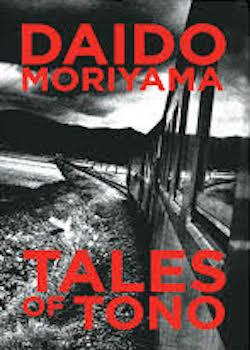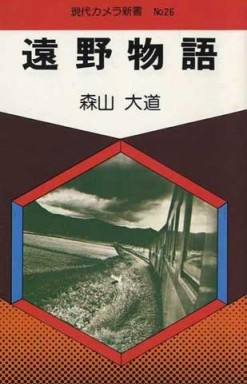Tales of Tono

By Daido Moriyama
Translated from Japanese by Lena Fritsch, with an afterword by Simon Baker
Tate Publishing, 2012
192 pages, ISBN 978-1-84976-094-2
Review by Timothy Holm
Published to coincide with a joint Daido Moriyama + William Klein photo retrospective at the Tate Modern art gallery in London (although not directly related to that exhibition), this is the first time Tales of Tono has appeared in an English edition. It was originally released in Japan in the 1970s following a trip to the town of Tono by famed Japanese photographer Moriyama. For those readers unfamiliar with his work, it may be prudent to begin with a very brief biographical overview leading up to this photobook.
Born in 1938 in Osaka, Moriyama began working as an amateur photographer in the late 1950s. Moving to Tokyo in 1961 to pursue his new profession more seriously, he initially found work as an assistant to the legendary Eikoh Hosoe, whose dark, high-contrast black and white style undoubtedly had an influence on Moriyama’s subsequent output.
For most of his career, Moriyama has worked as a freelancer, and as his work became more and more appreciated over the years, many public exhibits of his photos have occurred around the world. But Moriyama himself claims that he prefers photobooks over prints of his photos. Yet he has also said in interviews that the structure and organization of each book is not important to him. The main thing is the physicality and collection of the photos into a single volume which may be owned by anyone with a certain amount of interest and funds.
This is certainly true of Tales of Tono, a small jacketed softcover book with dimensions measuring only 17 x 11.4 x 2.2 cm. The cost to the consumer is a mere 13 pounds in the UK, and may be found for less at online bookshops. Considering what many original and out-of-print works by Moriyama go for these days at auction sites, it is a significant bargain.
It is debatable whether or not the size of the book is the best way to show off Moriyama’s photography. Each picture is given its own page with black borders on the top and bottom of the image. It might have been better if the photos were presented sideways in a landscape format, but that could also disturb normal reading habits.
A word must also be said about the book’s actual contents. It consists of 12 pages of colour photography at the front of the book, followed by the main ‘text’ as it were: 137 duotone (B&W) photos, all taken in or near Tono, a small city located in Iwate prefecture in northeastern Japan (the same area that was most affected by the March 2011 earthquake and tsunami).
At the back of the book can be found a lengthy, informative essay by Moriyama about his trip, as well as commentary by the translator and a short afterward by Simon Baker, curator of photography at the Tate. All together, it adds up to about 35 pages of writing, but this is where you are likely to spend the bulk of your time with the book.
As Moriyama mentions in the section of his essay called “Why Tono?” – the inspiration for the title and content of this particular series of photos came about in response to The Legends of Tono, a collection of 119 brief folktales from the region compiled by Kunio Yanagita in 1910. (It was later translated into English by Ronald A. Morse and published by The Japan Foundation in 1975). Many of the stories involve some kind of ghostly or supernatural presence which permeates the atmosphere, lending Tono a certain reputation in the minds of Japanese people. Because of this, Moriyama had long held a desire to visit Tono and take photographs there. He says, “it [is] a place that evokes a mysterious world, strangely combining narration and lyricism, reality and fantasy (page 160).”
The Tono that Moriyama depicts in this photobook also evokes a mysterious world where reality and fantasy commingle, as his pictures are never very clear and seem to have been taken in a forgotten time and place. However, it should be noted that Moriyama does not attempt to hide traces of the modern world (as it was in the 1970s) from his camera’s eye. Automobiles, utility poles, vending machines and so on can be found here, but there is a sense that these signs of modernity have not yet overwhelmed the more rural aspects of the landscape. Memories of a lost past are never far from view. No demons or spirits appear in a literal way, but spirits in other forms do seem to remain, as in the haunting photos of animals and pictures of old photographs and paintings. Shadows, graves, and folk traditions leave an indelible mark on the viewer’s mind as well.
Moriyama goes on to talk about his life-long search for the ‘original landscape’ of our memory, and what exactly that means to him, but it should be left to the readers themselves to discover whether or not he was successful in his quest to find that landscape in Tono.
This may not be the best place to start if you know little to nothing about Moriyama, but for established aficionados of his admittedly acquired taste, this is surely one of his most cohesive and fascinating books, and the photos still have the power to resonate even four decades after they were first produced.

